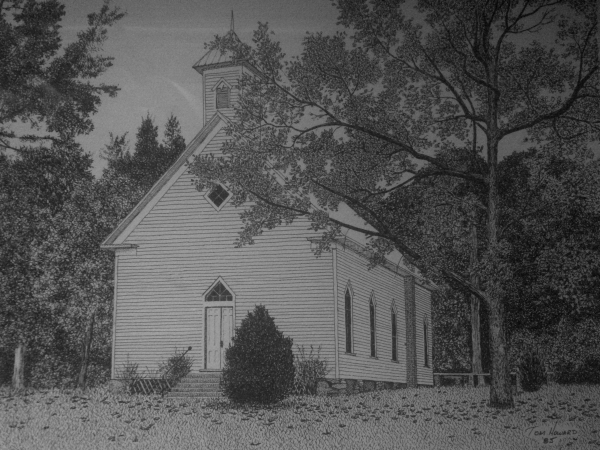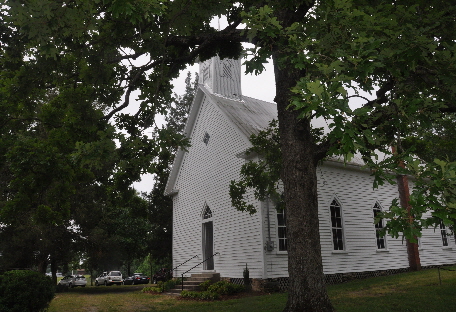WHY NOT FAIR GROVE CHURCH |
|||||||
 |
|||||||
Why Not Fair Grove Church |
|||||||
Today Fair Grove Church is most often called "Why Not Church" by area residents. Built beside the historic plank road --which ran from Winston Salem to Fayetteville-- in 1859, the lovely Fair Grove Church stands today and is the site of meetings of the Why Not Memorial Association and various reunions, and well as weddings.
The church was organized in 1859 and named Mt. Moriah Church. It was built beside the historic plank road--which ran from Winston Salem to Fayetteville. Zachary Lineberry was the first preacher. This building burned during the Civil War. While the congregation met in a building on the A. L. Yow property, near where Mrs. Mabel Yow presently lives, an arbor was built on grounds where the pr esent church stands.
esent church stands.
In 1870, Mr. and Mrs. William Tucker gave land to build the church. It was erected under the supervision of Martin Auman, Henry Auman, Silas Presnell, William Tucker, and others. The church was named Fair Grove, because of its location in a grove of oak trees. The first pastor was the Reverend W. C. Kennett (1870-72).
The timber for the building was cut from the farm of Martin Auman and hauled by his two sons, Jefferson and Alson, to a mill at Sugg Creek where it was sawed into lumber. Men from miles around gave of their time to erect the church. Material for the ceiling was dressed by hand.
In 1871 the church was finished, pews added, and windows installed. At that time, James P. Boroughs, started a private school there. He later became the first headmaster of the Why Not Academy. This church building served until 1900.
About the year 1900, a new church was built. Services were held in the Why Not Academy schoolhouse while the new church was under construction.
Candles, and then kerosene lamps were used for lighting the church. When Charles B. Auman was a student at Elon College, he had a chance to buy an oil-buring brass chandelier from the college. This was installed in the church and is intact today. Later, a kerosene hanging lamp with shade was purchased to supplement the light over the pulpit. Finally, Mr. and Mrs. Fred J. Cox donated a Delco light plant. Emory Slack volunteered to furnish the wiring needed, and Euclid Auman did the electrical work. This method of lighting was used until electricity became available in rural areas in the 1930s.
The Fair Grove Methodist Church was one of eight churches comprising the Love Joy Methodist Protestant Circuit. One pastor took care of the eight churches, with each having preaching once a month. When Seagrove Methodist Church was built in 1933, and Fair Grove Church no longer held regular services, the circuit became known as the Seagrove circuit.
A cemetery was first located on the grounds adjacent to the church. Due to the high water table, a new cemetery was started. Alfred L.Yow gave five-sixteenths of an acre of slightly elevated land located about one hundred yards north of the church. Later, the Missionary Society bought one-third of an acre from Mr. and Mrs. Philmore Graves, whose land bordered a part of the cemetery. In 1933, Mr. and Mrs. L. C. Cole gave one-third of an acre of adjoining land.
Mrs. Minnie Stuart wrote about Sunday School, missionary work, and other memories of Fair Grove Church in her 1958 booklet, History of Fair Grove Methodist Church and the book she wrote with Bill Auman, Why Not, North Carolina: A History of the Why Not Academy, the Why Not Memorial Association, The Why Not Community, and The Fair Grove Methodist Church, published in 1986.